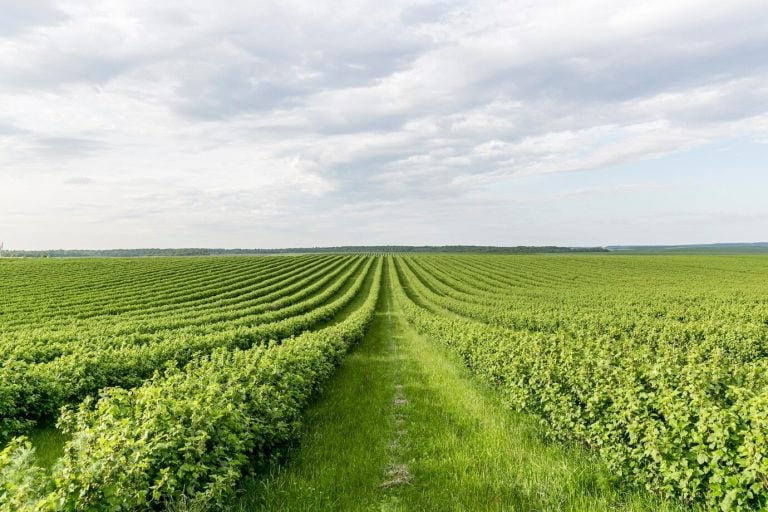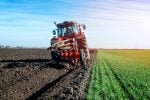The soil beneath our feet holds more power than any political system ever created, reflecting the importance of agriculture in sustaining societies. From ancient Mesopotamia to modern-day China, strong nations have always been built on the foundation of a thriving agricultural sector. Yet in our digital world, we often forget this fundamental truth: no society has ever prospered without securing its food supply.
When the COVID-19 pandemic disrupted global supply chains in 2020, shoppers faced empty grocery shelves for the first time in generations. This stark reminder of our dependence on agriculture sent shockwaves through communities worldwide. Food security suddenly became a kitchen table conversation, not just a policy discussion, emphasizing the role of food agriculture in our everyday life. Why is agriculture important? A report from the World Economic Forum explores how the pandemic exposed vulnerabilities in the global food system and the urgent need for more resilient supply chains.
Agriculture employs over 1 billion people globally—roughly 27% of the world’s workforce. In developing nations, this figure jumps to 60% of all workers. These aren’t just statistics; they represent real families whose livelihoods depend on farming, highlighting the job opportunities created by agriculture.
Beyond economics, agriculture plays an important role in shaping national identity and cultural heritage. Think of rice paddies in Japan, vineyards in France, or corn fields stretching across America’s heartland. These aren’t merely food production systems—they’re cultural touchstones woven into the fabric of these societies.
As climate change intensifies, nations that protect their agricultural capacity gain strategic advantages in providing raw materials that extend far beyond food production, promoting resilient agriculture. They secure their independence, strengthen their economies, and protect their citizens from the volatility of global markets.
The next time you see a farmer’s field, remember: you’re looking at the bedrock of civilization itself. This exploration of agriculture’s ten critical contributions to nation-building reveals why the sector remains as vital today as it was when humans planted seeds 12,000 years ago.
Boost customer satisfaction with just a few clicks
Most-Loved Features:
- On-demand drivers
- Real-time GPS tracking
- Delivery confirmation photos
- Over 50% of customers report a smoother delivery experience
Step-by-Step: Importance of Agriculture For Economic Development
Agriculture adds $9.5 trillion to the U.S. economy and provides 1 million jobs.
Agricultural sectors generate significant multiplier effects through direct, indirect, and induced economic impacts.
Sustainable agricultural practices are key to long-term economic growth and stability.
Step 1: Analyzing and Encouraging Economic Development through Agriculture
Agriculture remains the foundation of economic development for many nations across the globe. When examining GDP contributions from the agricultural sector, we find patterns that help explain why agriculture matters so much to national economies. In the United States alone, agriculture accounts for $9.5 trillion in economic value as of early 2025. Perhaps more telling, nearly 18% of the nation’s economy and 30% of American jobs are either directly or indirectly connected to the agriculture and food sectors.
To properly assess these economic impacts, analysts track several key indicators. Farm income represents the most direct measure, showing the earnings generated by agricultural production. Trade balances reveal how much agricultural exports contribute to a nation’s economic health, with the U.S. generating approximately $183 billion in agricultural exports. Input costs and commodity prices provide insights into the sector’s profitability, while land values offer a look at the capital base supporting the industry.
Collecting this data requires accessing multiple sources to understand how they interact to provide food for communities. Government agricultural departments typically publish regular reports on production levels, prices, and farm incomes. Trade organizations compile export and import statistics. Economic development agencies track job creation and regional impacts. For the most accurate analysis, data from all these sources must be combined to create a complete picture of agriculture’s economic footprint.
Practical Data Collection Strategies About Food Agriculture
For professionals seeking to understand agriculture’s economic impact, several practical approaches exist. The U.S. Department of Agriculture’s Economic Research Service provides extensive data sets covering everything from farm income to rural development. Trade associations like the American Farm Bureau Federation publish regular economic outlook reports. Academic institutions with agricultural economics departments frequently release studies examining specific aspects of the agricultural economy.
When analyzing this data, pay special attention to trends rather than isolated statistics. A single year’s numbers might reflect unusual weather events or market disruptions. Looking at five-year or ten-year trends provides a more accurate picture of agriculture’s true economic impact. Similarly, comparing regional data reveals how agricultural impacts vary based on local conditions and crop specialization.
Step 2: Diversification and Dependence on Agriculture
The relationship between economic diversification and agricultural dependence creates an interesting balance for national economies. Countries with highly developed economies typically maintain robust agricultural sectors while also developing strong manufacturing and service industries. The United States exemplifies this approach, with agriculture forming a significant but not dominant portion of the overall economy. However, in many developing nations, agriculture may represent 30% or more of GDP and employ a majority of the workforce.
This level of dependence creates both opportunities and risks, highlighting how agriculture affects economic stability. On the positive side, agricultural strength provides a solid foundation for economic development. As renowned agricultural scientist M.S. Swaminathan noted, “Agriculture can trigger job-led economic growth, provided it becomes intellectually satisfying and economically rewarding.” The sector creates jobs, generates export revenue, and supports rural communities. However, over-reliance on agriculture exposes economies to significant risks from weather events, pest outbreaks, or market fluctuations.
Examining top agricultural products contributing to national economies reveals interesting patterns. In the United States, corn, soybeans, dairy products, and beef cattle generate the highest economic value. Other nations might derive most of their agricultural income from crops like rice, wheat, coffee, or cocoa. Understanding which products drive agricultural value helps explain economic vulnerability or resilience.
Global Market Influence on Agricultural Success
Global agricultural markets significantly impact national economic success. Price fluctuations for major commodities can dramatically affect farm incomes and rural economic health. Trade barriers or preferential agreements shape export opportunities in global trade. International competition influences production decisions and profitability.
For example, when examining regional economic impacts within the United States, we see that Louisiana ranks as the top agricultural export state, followed by California, Washington, Texas, and Illinois. These states benefit tremendously from global agricultural trade. However, they also face the greatest risk from trade disputes or changing international market conditions.
Agricultural economists recommend that nations pursue what’s called “strategic diversification” – maintaining strong agricultural sectors while simultaneously developing manufacturing and service industries that can offset agricultural volatility, thereby encouraging economic development. This approach protects economic stability while still capturing agriculture’s benefits.
Step 3: Strategic Economic Initiatives
Government policies significantly influence the agricultural economic impact. Effective initiatives typically combine several approaches. Direct subsidies help farmers manage risk and maintain production during challenging periods. Research funding supports productivity improvements and innovation. Infrastructure investments improve transportation networks critical for moving agricultural products to market. Education programs develop the skilled workforce needed for modern farming.
The partnership between the public and private sectors plays a crucial role in maximizing agriculture’s economic benefits. Government research institutions often collaborate with private companies to develop new crop varieties or farming technologies. Public extension services work with farmer cooperatives to spread knowledge and best practices. Financial institutions partner with government agencies to provide specialized agricultural credit programs.
Case Studies in Successful Agricultural Policy
Several nations provide instructive examples of effective agricultural policies that maximize economic impact. India’s Green Revolution combined improved seed varieties, irrigation infrastructure, and farmer education to transform food security and the agricultural industry. Brazil’s agricultural research agency EMBRAPA helped convert previously unproductive savanna into highly productive farmland. The European Union’s Common Agricultural Policy demonstrates both the benefits and challenges of coordinated multinational agricultural support.
In examining these examples, we see that the most successful initiatives share certain characteristics. They provide stable, predictable policy environments that encourage long-term investment. They balance government support with market responsiveness. They integrate environmental sustainability with economic objectives. And they specifically address the needs of small-scale producers alongside large commercial operations.
Step 4: Agricultural Value Chain Development
Understanding agriculture’s full economic impact requires examining the entire agricultural value chain, not just primary production, but also considering the management of natural resources. Farm equipment manufacturing, food processing, transportation, retail, and food service all depend on agricultural inputs and multiply the sector’s economic impact.
This multiplier effect creates significant economic ripples. When farm equipment retailers hire new employees due to increased tractor sales, this creates indirect economic impacts. When agricultural workers spend their paychecks in local businesses, this generates induced economic impacts. Together, these direct, indirect, and induced impacts create powerful economic momentum through various agricultural activities.
Value chain development offers a strategic approach to maximizing agriculture’s economic benefits. By adding processing capacity within agricultural regions, communities capture more economic value from their raw materials. Building specialized transportation infrastructure reduces costs and improves access to markets. Developing marketing cooperatives or regional brands helps capture premium prices for agricultural products.
Calculating the True Agriculture Affect Economic Footprint
Traditional economic measures often underestimate agriculture’s true impact by focusing solely on farm-gate production values. More sophisticated analysis techniques reveal that agriculture’s broader economic footprint contributes significantly to the gross domestic product. Input-output models trace how agricultural spending flows through regional economies. Employment multiplier calculations show how farm jobs create additional employment in supporting sectors. Tax revenue analysis demonstrates agriculture’s contribution to public finances.
Using these techniques, economists have determined that every dollar in agricultural production typically generates between $2 and $3 in additional economic activity. Similarly, each direct farm job usually creates between 1.5 and 2.5 additional jobs in related sectors. These multipliers explain why agriculture remains so important even in highly industrialized economies.
Step 5: The Role of Technology and Innovation in Agricultural Economics
Agricultural technology dramatically influences economic impact. Productivity improvements from mechanization, precision farming, improved genetics, and digital tools have transformed agriculture’s economic profile. Where a single farmer might once have produced enough food for 10-15 people, modern agricultural methods allow that same farmer to feed 150 or more.
This productivity revolution changes agriculture’s economic role. Fewer workers can produce more food, freeing labor for manufacturing and services. However, those remaining in agriculture require more capital investment and specialized knowledge. The economic value created per agricultural worker increases substantially, even as the sector’s share of total employment decreases.
Looking forward, several technological frontiers promise to further reshape agricultural economics, particularly through advancements in agricultural productivity. Gene editing technologies like CRISPR may accelerate crop improvement and adaptation to changing climates. Artificial intelligence and machine learning could optimize farming practices at unprecedented scales. Vertical farming and cellular agriculture might redefine where and how food production occurs. To stay ahead and support this innovation wave, farmers globally are adopting diverse farming methods that improve yield and sustainability. Exploring the top global farming strategies reveals how these techniques optimize resources and increase resilience. For an in-depth overview, check out this insightful post on the most effective farming techniques around the world.
Balancing Technology Adoption with Economic Access
The economic benefits of agricultural technology aren’t always distributed equally. Large commercial operations often adopt new technologies first, gaining competitive advantages. Smaller producers may lack the capital or technical knowledge to implement innovations. This disparity can accelerate farm consolidation and change rural economic structures.
Progressive agricultural policies address this challenge through several approaches. Cooperative ownership models allow smaller producers to share expensive equipment. Public research prioritizes technologies appropriate for various farm scales. Extension services provide technical assistance to help all producers implement appropriate innovations.
For agriculture to fulfill its nation-building potential, technological progress must balance productivity improvements with inclusive economic development. As agriculture becomes more knowledge-intensive, education and skills development become increasingly important for maximizing the sector’s economic benefits.
Agriculture’s economic importance extends far beyond feeding people, though that remains its most critical function. The sector provides the foundation for broader economic development, supports rural communities, generates export earnings, and creates economic activity throughout the value chain. By understanding and strategically enhancing these impacts, nations can maximize agriculture’s contribution to the world’s food security, economic strength, and stability.
Agricultural Contributions to Food Security and Societal Growth
Agriculture strengthens nations by ensuring reliable food access for all citizens.
Agricultural systems build community resilience and provide economic stability.
Modern farming practices address climate challenges while supporting population growth.
Enhancing Global Food Supply Security
Food security exists when all people have physical, social, and economic access to sufficient, safe, and nutritious food. Agricultural systems form the backbone of this security through integrated supply chains that connect farms to consumers. The complexity of these chains varies greatly between regions, but their fundamental purpose remains consistent: delivering food where it’s needed.
These supply chains face increasing stress from climate change. Rising temperatures, erratic rainfall patterns, and extreme weather events directly impact crop yields and livestock productivity. Data from the Food and Agriculture Organization (FAO) shows the food and agriculture impacts across 245 countries and territories, covering crop, livestock, and forestry sectors—essential metrics for tracking global food supply dynamics.
Agricultural response to climate challenges takes many forms. Farmers worldwide are adopting climate-smart practices like drought-resistant crop varieties, water conservation techniques, and precision farming. These approaches help maintain productivity despite environmental changes. For example, USDA projections for 2025 indicate stable to slightly increased crop production, with a total supply of major crops like soybeans expected to rise to about 4.77 billion bushels, supporting reliable food supply chains.
Local Food Systems and National Security
Local food systems play a critical role in national security frameworks. Countries with strong domestic agriculture sectors demonstrate greater resilience during global disruptions like pandemics, conflicts, or trade disputes. The COVID-19 pandemic clearly illustrated this principle when international supply chains faltered, and nations with robust local food systems fared better.
National agriculture policies increasingly emphasize food sovereignty—a country’s ability to define its food systems rather than being subject to market forces beyond its control. This concept recognizes that food security isn’t just about having enough calories available but ensuring people have access to culturally appropriate, locally produced foods that support both physical health and cultural traditions.
Promoting Societal Stability and Growth
Agricultural development creates reliable income streams for rural communities. When farming communities thrive economically, they contribute to social stability and reduce urban migration pressures. The USDA Census of Agriculture, conducted every five years, provides detailed data on land use, operator characteristics, production practices, and farm income—key metrics for understanding how agriculture supports local livelihoods.
Small-scale farmers represent about 500 million households globally, making them the largest employment group in many developing countries. These farming families both produce food and generate economic activity. When their incomes are stable, entire communities benefit through increased spending on education, healthcare, and local businesses.
Agricultural knowledge transfer systems significantly impact community resilience. Extension services, farmer field schools, and agricultural education programs help spread innovations and best practices. Education and agricultural knowledge dissemination are particularly critical for improving production efficiency and climate change resilience, as farmers need to constantly adapt their practices to changing conditions.
Agriculture’s Effect on Population Health, Everyday Life
Agricultural systems directly influence population nutrition outcomes. Countries with diverse agricultural production typically show better nutrition indicators than those dependent on monocultures or food imports. Nutritionally-focused agriculture prioritizes growing diverse, nutrient-dense crops rather than just maximizing calorie production.
Recent nutrition science emphasizes that food diversity—a characteristic of traditional farming systems—provides micronutrients essential for human health. Modern agricultural policies increasingly support this approach, encouraging farmers to grow varied crops that contribute to balanced diets.
The relationship between agriculture and public health extends beyond nutrition. Agricultural practices affect water quality, soil health, and environmental conditions that impact community wellbeing. Sustainable farming methods reduce negative externalities like water pollution from excessive fertilizer use, protecting both environmental and human health.
Cultural Heritage and Preservation Through Agriculture
Traditional agriculture preserves cultural knowledge, indigenous farming techniques, and food heritage. Many societies maintain distinct identities through agricultural practices passed down through generations. These practices often contain sophisticated ecological knowledge adapted to local conditions over centuries.
Traditional crop varieties (landraces) represent biological and cultural heritage. Their preservation maintains genetic diversity while honoring cultural food traditions. Organizations worldwide now work to document and preserve these genetic resources and the associated cultural knowledge before they disappear.
The social rituals surrounding planting, harvest, and food preparation strengthen community bonds. Agricultural festivals marking seasonal transitions occur in virtually every farming society, creating shared experiences that build social cohesion. These cultural practices provide psychological benefits beyond their economic value, contributing to community resilience during difficult times.
Global Impact of Agricultural Development
Agriculture’s contribution to global development extends beyond food production. Agricultural trade represents a significant portion of international commerce, impacting related industries, affecting global economic stability. When agricultural markets function effectively, they help balance resource disparities between regions.
Agricultural commodity prices have shown significant recent increases; for example, the USDA Agricultural Prices Index rose 25% from February 2024 to February 2025, reflecting market volatility that can affect food availability and affordability globally.
Agricultural development creates ripple effects through entire economies. When farmers prosper, they purchase more goods and services from non-agricultural sectors, creating additional jobs. Economic studies consistently find that agricultural growth has larger poverty-reducing effects than equivalent growth in other sectors, particularly in developing economies.
Development experts increasingly recognize agriculture’s centrality to achieving multiple Sustainable Development Goals. Beyond the obvious connection to Zero Hunger (SDG 2), agricultural improvement contributes to poverty reduction, gender equality, clean water, climate action, and biodiversity conservation goals. This multifunctional role makes agriculture a strategic focus for countries seeking comprehensive development.
Sustainable Farming and Its Role in National Progress
Sustainable farming practices directly strengthen national economic resilience and environmental health.
Agricultural sustainability drives innovation and creates new economic sectors.
Policy alignment between farming practices and national goals accelerates development.
Exploring Sustainable Practices
Sustainable farming represents a fundamental shift from conventional agriculture by focusing on long-term ecological balance rather than short-term productivity. At its core, sustainable farming aims to meet current agricultural needs without compromising future generations’ ability to meet theirs. This approach has gained significant traction as nations recognize that their long-term progress depends on responsible resource management. Exploring innovative approaches to eco-friendly agriculture can provide valuable insights for those interested in environmental stewardship and food security. To delve deeper into effective eco-conscious methodologies, check out this comprehensive guide about leading sustainable farming techniques that boost yields while preserving natural resources.
The adoption of regenerative agricultural techniques forms the backbone of sustainable farming. These practices include crop rotation, which disrupts pest cycles and enhances soil fertility; cover cropping, which prevents soil erosion and adds organic matter; and reduced tillage, which maintains soil structure and carbon content. Research from the Rodale Institute’s Farming Systems Trial—the longest-running side-by-side comparison of organic and conventional farming—shows that after an initial transition period, regenerative systems match or exceed conventional yields while using 45% less energy and releasing 40% fewer carbon emissions. To further explore innovative approaches to environmental stewardship in agriculture, the article 10 essential sustainable farming techniques for a greener future offers comprehensive insights. These methods complement regenerative farming by integrating advanced practices that enhance soil health, conserve water, and reduce chemical use, contributing to a resilient and eco-friendly agricultural system.
Water conservation technologies represent another critical component of sustainable farming systems. Drip irrigation delivers water directly to plant roots, reducing consumption by up to 60% compared to flood irrigation methods. Precision agriculture takes this further by using soil moisture sensors, weather data, and plant needs to apply water only when and where needed. In Israel, a global leader in agricultural water efficiency, these technologies have enabled farmers to reduce water use by 70% while increasing crop yields by 60% since the 1950s. The technology has been exported globally, creating a new economic sector that strengthens national GDP.
Reducing Resource Waste Through Circular Systems
Agricultural waste management has evolved from a disposal problem to an opportunity for resource recovery. The implementation of circular systems transforms “waste” into valuable inputs. Animal manure becomes fertilizer, crop residues become compost or biofuel, and processing by-products become animal feed. This closed-loop approach dramatically reduces resource consumption while creating new value streams.
The biogas sector exemplifies this transformation. In Germany, over 9,500 biogas plants convert agricultural waste into energy, providing power for over 9 million households while reducing methane emissions from decomposing organic matter. The sector employs over 50,000 people and contributes significantly to the country’s renewable energy targets. Similar initiatives in developing nations like India and Bangladesh provide energy security at the village level while improving waste management and creating local employment.
Integrating Sustainability into Agricultural Policy
Effective agricultural policy frameworks must recognize the interdependence between environmental sustainability and economic prosperity. Forward-thinking nations have moved beyond viewing sustainability as an environmental constraint and instead position it as an economic accelerator. This perspective shift has profound implications for policy design and implementation.
National agricultural policies that incorporate sustainability criteria tend to follow a three-tiered approach. First, they establish regulatory frameworks that set minimum environmental standards for farming operations. Second, they create financial incentives that reward farmers for adopting sustainable practices. Third, they invest in research, education, and extension services that help farmers transition to more sustainable methods.
The economic benefits of sustainability-focused agricultural policies extend far beyond the farm. When farmers adopt sustainable practices, they typically reduce input costs (particularly for synthetic fertilizers and pesticides), improve resource efficiency, and often command premium prices for their products. These improvements strengthen rural economies and reduce the need for government support over time.
Economic Incentives for Environmental Sustainability
Financial mechanisms play a crucial role in accelerating the adoption of sustainable farming practices. These tools range from direct subsidies and tax incentives to more sophisticated approaches like payments for ecosystem services and carbon markets. The design of these mechanisms must balance immediate economic needs with long-term sustainability goals.
Carbon sequestration payments have emerged as particularly effective policy tools. Agricultural soils have the potential to sequester significant amounts of carbon through practices like no-till farming and cover cropping. By monetizing this carbon capture, farmers receive direct financial benefits for practices that also improve soil health and water retention. Australia’s Carbon Farming Initiative has facilitated projects sequestering over 65 million tonnes of carbon dioxide equivalent while generating additional income for participating farmers. Similar programs in the United States, Canada, and across Europe demonstrate how economic incentives can align farmers’ interests with national climate goals.
Sustainable Agriculture’s Impact on Rural Development
Rural communities often bear the brunt of economic fluctuations and population decline. Sustainable agriculture serves as an anchor for these communities by creating stable employment opportunities and fostering local economic development. This stabilizing effect extends beyond direct farm employment to include processing, distribution, and service sectors.
The diversification inherent in sustainable farming systems creates more consistent income streams throughout the year, reducing seasonal unemployment. A farm that grows multiple crops, integrates livestock, and perhaps includes agritourism components provides year-round work opportunities. Studies from the UN Food and Agriculture Organization indicate that sustainable farming operations employ 30% more people per hectare than conventional, industrialized farms. This employment density helps maintain critical population thresholds needed for schools, healthcare facilities, and other rural services.
Value-added processing of sustainably grown products further amplifies rural development impacts. Local processing facilities for organic grains, specialty crops, or grass-fed meat products create additional jobs while keeping more of the food dollar within the community. The Appalachian Sustainable Development organization in the United States has documented a 4x economic multiplier effect from local food systems compared to conventional agriculture, meaning every dollar spent circulates and creates four dollars of economic activity within the region.
Building Rural Innovation Ecosystems
Sustainable agriculture frequently catalyzes broader rural innovation. The problem-solving mentality required for successful, sustainable farming naturally extends to other domains, creating rural innovation ecosystems. These networks of farmers, processors, researchers, and service providers collaborate to address challenges and capitalize on opportunities.
The Netherlands offers a compelling example of how sustainable agriculture can drive innovation-based rural development. Dutch farmers have reduced dependence on water for key crops by 90% and nearly eliminated the use of chemical pesticides in greenhouses while becoming the world’s second-largest agricultural exporter by value. This achievement resulted from deliberate policy choices that encouraged collaboration between farmers, researchers, and technology companies.
Environmental Restoration Through Agricultural Systems
National progress increasingly depends on restoring and maintaining ecological systems that provide essential services like clean water, flood control, and climate regulation. Sustainable agriculture offers a unique opportunity to restore degraded environments while maintaining productive capacity. These restoration activities generate immediate economic benefits through improved ecosystem services and long-term benefits through enhanced resilience.
Watershed restoration through agricultural management represents one of the most cost-effective approaches to improving water quality and quantity. By implementing buffer strips along waterways, reducing soil erosion, and managing nutrient applications more precisely, farmers can dramatically reduce pollution while improving water retention. New York City’s watershed protection program works with upstream farmers to implement sustainable practices, avoiding the need for a $10 billion filtration plant and saving residents over $300 million annually in water treatment costs. Similar programs exist worldwide, recognizing that working with agricultural systems offers more affordable and effective water management than engineered solutions alone.
Biodiversity enhancement through sustainable agriculture creates multiple national benefits. Diverse agricultural landscapes support pollinators, natural pest enemies, and wildlife while providing recreational opportunities.
Measuring Sustainability’s Contribution to National Progress
Traditional economic metrics often fail to capture the full contribution of sustainable agriculture to national progress. A more comprehensive approach incorporates environmental and social indicators alongside economic measures. This expanded view helps policymakers identify synergies and trade-offs between different national objectives.
Natural capital accounting offers a framework for quantifying sustainability’s contribution to national wealth. By assigning value to soil health, water quality, biodiversity, and carbon sequestration, these approaches make visible what conventional economic metrics miss. The United Nations System of Environmental-Economic Accounting (SEEA) recognizes the importance of financial assistance and provides standardized methods for countries to incorporate natural capital into national accounts. Nations that have adopted these approaches, like Colombia and the Philippines, can better evaluate how agricultural policies affect total national wealth, not just GDP.
Performance indicators that track sustainability outcomes help guide policy refinements. These indicators typically include measures of resource efficiency (water, energy, and nutrients per unit of production), environmental impacts (greenhouse gas emissions, water quality, and biodiversity), and social outcomes (rural employment, farmer income stability, and food security). Denmark’s Green Accounting system tracks 23 agri-environmental indicators annually, allowing policymakers to identify trends and adjust programs accordingly. Similar New Zealand, Canada, and Switzerland systems demonstrate how measurement drives sustainability performance improvement.
Why Is Agriculture Important For Economic Development
Agriculture stands as a foundation for nations worldwide. Its impact goes beyond food production to shape economies, strengthen communities, and secure futures. Through our exploration of these ten reasons, we see how farming creates jobs, drives GDP growth, and builds food sectors that protect millions of people.
The path forward is clear: nations that invest in their agricultural sectors gain stability. They create resilient food supplies, open export markets, and develop rural communities where people can thrive. Each farm represents more than crops—it represents potential for national growth.
Why is agriculture important is its connection to everything else: when farms prosper, so do processing plants, transportation networks, research facilities, and even technology companies developing new farming tools. Understanding the different types of crops grown is fundamental to grasping agriculture’s vast role in economic development and food security. From cereal grains to root vegetables, each crop type has unique contributions to nutrition, economy, and regional suitability. An insightful overview of the various key types of agricultural crops and their significance helps illustrate why crop diversity is essential to resilient and sustainable food systems.
The next time you see a field of crops or a small family farm, remember it’s not just about the food. It’s about the building blocks of society—jobs, stability, health, and progress. In supporting agriculture, we support the very foundation upon which strong nations are built.
Our future depends on how we value, protect, and advance our agricultural systems today.














